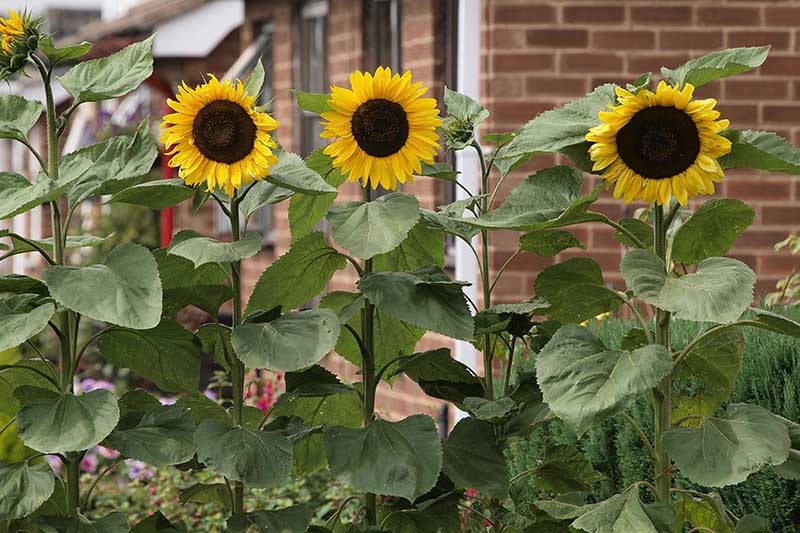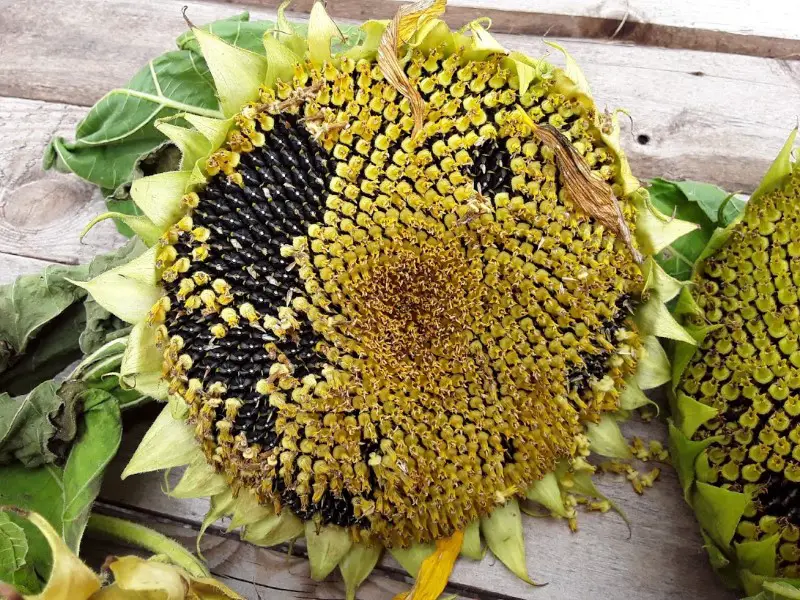Choosing the Right Variety for Your Climate
When it comes to growing sunflowers, selecting the right variety is crucial for success. With over 70 different species of sunflowers, choosing the best one for your region’s climate and growing conditions can be overwhelming. However, by understanding the different types of sunflowers, you can make an informed decision and set your plants up for success. Dwarf sunflowers, for example, are perfect for small gardens or containers, growing to be around 2-3 feet tall. Tall sunflowers, on the other hand, can grow up to 12 feet tall and are ideal for large gardens or fields. Pollen-free varieties are also available, making them a great option for those who suffer from allergies. To choose the right variety for your climate, consider factors such as temperature, moisture, and sunlight. If you live in a region with hot summers, look for varieties that are heat-tolerant. If you live in a region with cool summers, look for varieties that are cold-tolerant. By selecting a variety that is well-suited to your climate, you can ensure that your sunflowers will thrive and provide you with beautiful blooms all season long. Remember, learning how to grow sunflower plant starts with choosing the right variety, so take your time and do your research.
Preparing the Soil for Sunflower Success
Before planting sunflower seeds, it’s essential to prepare the soil to create a sunflower-friendly environment. Sunflowers require well-draining, fertile soil with a pH between 6.0 and 7.0. To test the pH level of your soil, use a soil testing kit or send a sample to a laboratory for analysis. If your soil is too acidic or alkaline, add organic matter such as compost or well-rotted manure to adjust the pH level. Remove any debris, rocks, and weeds from the planting area to prevent competition for water and nutrients. Till the soil to a depth of 12 inches to loosen and aerate it, making it easier for sunflower roots to grow. Adding a 2-inch layer of compost or well-rotted manure can also improve soil fertility and structure. By preparing the soil properly, you’ll be well on your way to growing healthy and thriving sunflowers. Remember, learning how to grow sunflower plant requires attention to detail, including soil preparation, to ensure a successful harvest.
How to Sow Sunflower Seeds for Maximum Growth
Once you’ve prepared the soil, it’s time to sow your sunflower seeds. Sowing sunflower seeds at the correct depth, spacing, and orientation is crucial for maximum growth. Start by planting the seeds 1 inch deep and 6 inches apart in well-draining soil. Sow the seeds in a location that receives full sun, as sunflowers require at least 6 hours of direct sunlight per day. Plant the seeds in a north-south orientation to ensure the tall stalks receive adequate sunlight. Water the soil gently but thoroughly after planting, and keep the soil consistently moist during the first few weeks after sowing. As the seeds germinate and grow, thin them out to 12 inches apart to prevent overcrowding. Learning how to grow sunflower plant requires attention to detail, including proper sowing techniques, to ensure a successful harvest. By following these steps, you’ll be well on your way to growing healthy and thriving sunflowers.
Nurturing Your Sunflowers: Watering, Fertilizing, and Pruning
To ensure healthy growth and blooming, it’s essential to provide optimal care for your sunflowers. Watering is crucial, especially during the first few weeks after sowing. Water your sunflowers deeply once or twice a week, depending on weather conditions. Avoid getting water on the leaves or flowers to prevent fungal diseases. Fertilizing is also vital for promoting healthy growth. Feed your sunflowers with a balanced fertilizer once a month, following the manufacturer’s instructions. Pruning is another important aspect of sunflower care. Remove any weak or spindly growth to encourage strong, sturdy stems. Also, remove any dead or dying flowers to promote further blooming. By following these simple tips, you’ll be well on your way to growing a thriving and healthy sunflower plant. Remember, learning how to grow sunflower plant requires attention to detail, including proper watering, fertilizing, and pruning techniques, to ensure a successful harvest.
Supporting Tall Sunflowers: Stakes, Cages, and Other Solutions
Tall sunflowers can grow up to 12 feet or more, making them prone to wind damage and toppling over. To prevent this, it’s essential to provide support for these towering plants. One way to do this is by using stakes. Drive a stake into the ground near the base of the sunflower, and tie the stem to the stake using a soft material like twine or cloth. Make sure to tie the stem loosely to allow for growth and movement. Another option is to use cages, which can be placed around the sunflower at planting time. As the plant grows, it will be contained within the cage, providing support and structure. Other solutions include using trellises, arbors, or even a fence to provide a framework for the sunflower to grow against. By providing support, you’ll be able to enjoy your sunflowers without worrying about them toppling over. Remember, learning how to grow sunflower plant requires attention to detail, including providing support for tall varieties, to ensure a successful harvest.
Pest and Disease Management: Common Issues and Solutions
As with any plant, sunflowers are susceptible to pests and diseases that can hinder their growth and blooming. To ensure a healthy and thriving sunflower plant, it’s essential to be aware of these common issues and know how to manage them. Aphids, whiteflies, and spider mites are common pests that can infest sunflowers, causing damage to the leaves and stems. Organic solutions include spraying soapy water or neem oil to control infestations. Chemical solutions, such as insecticidal soap or pyrethrin, can also be effective. When it comes to diseases, powdery mildew, downy mildew, and rust are common issues that can affect sunflowers. To prevent these diseases, ensure good air circulation, water plants at the base rather than getting the leaves wet, and remove any infected plants. Organic solutions include spraying milk or bicarbonate to control fungal growth. Chemical solutions, such as fungicides, can also be effective. By being proactive and taking steps to prevent and manage pests and diseases, you’ll be able to enjoy a healthy and thriving sunflower plant. Remember, learning how to grow sunflower plant requires attention to detail, including managing pests and diseases, to ensure a successful harvest.
Encouraging Blooming and Pollination
To promote blooming and pollination in sunflowers, it’s essential to provide the right conditions. One of the most critical factors is adequate sunlight. Sunflowers require full sun to produce blooms, so choose a location that receives at least six hours of direct sunlight per day. Healthy soil is also crucial for blooming sunflowers. Ensure the soil is well-draining and rich in organic matter, as this will promote strong root growth and support blooming. Additionally, sunflowers rely on pollinators like bees and butterflies to facilitate pollination. To attract these beneficial insects, plant a variety of flowers that bloom at different times, providing a constant source of nectar and pollen. By creating a pollinator-friendly environment, you’ll encourage blooming and pollination in your sunflowers. Remember, learning how to grow sunflower plant requires attention to detail, including providing the right conditions for blooming and pollination, to ensure a successful harvest. By following these tips, you’ll be rewarded with bright, cheery blooms that will bring joy and beauty to your garden.
Harvesting and Drying Sunflowers for Year-Round Enjoyment
Once your sunflowers have bloomed and the petals have dropped off, it’s time to harvest them. Cut the stem about an inch above the soil line, leaving a small portion of stem attached to the plant. This will help the plant to dry out and prevent it from rotting. To dry sunflowers, tie the stems together in small bunches and hang them upside down in a warm, dry, dark place. It may take several weeks for the flowers to fully dry, but the result will be worth it. Dried sunflowers can be used in arrangements, crafts, and other decorative projects, providing year-round enjoyment. For a more dramatic effect, you can spray paint the dried flowers in bold colors or add glitter and other embellishments. By learning how to grow sunflower plant and harvest them at the right time, you’ll be able to enjoy the beauty of sunflowers long after the blooming season has ended. With a little creativity, you can turn your sunflowers into stunning works of art that will brighten up any room.








